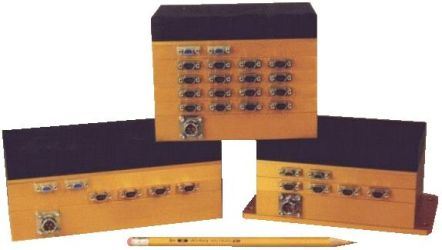Historical

The WAIS system is a wireless instrumentation system designed for the Naval Air Warfare Center for aircraft testing. The Phase II hardware pictured above successfully flew aboard a CH-53 helicopter in 2001.
The purpose of this system was to replace the wires between various test sensors and existing analog telemetry equipment. The WAIS system reduces test installation time, increases signal quality, and extends analog sensor placements on rotor hubs or other extreme locations.
Use of Direct Sequence Spread Spectrum technology in the radio avoids interference with any of the on-board systems (navigation or communications). Automated network message routing through the airframe to the central data recorder precludes interference problems. The routing of the data through the airframe occurs with minimum delay or “data latency” because of the critical nature of the system.
The Phase II system hardware meets full military specifications. The WAIS system consists of data gathering units that are located in remote sections of the aircraft. These units service up to 16 transducers. They power the transducers, gather the data, and control the 2 megabit per second data flow to the central point in the airframe. The central data receiving point in the airframe buffers the incoming data and outputs either analog signals or a digital PCM data stream to a data recorder or a PCM encoder. A third piece of hardware is used for system setup and initialization. It communicates with the system installed on the aircraft and takes complete control of the on-board system during the initialization process. This includes set up of the data sample rates, filter settings, and real-time message routing. When the setup is completed, the ground unit exits the network, leaving the network to perform the data acquisition job under control of the on-board central data collection unit.
- Up to 12KHz Sample Rate
- Up to 16 sensors per unit
- Up to 8 units per system
- Maximum 64 channels per system
- Modules can support resistive, capacitive, and voltage sensor types.
- Approximate Size: Expandable from 13.7cm x 8.9cm x 7.7cm
View the full WAIS Technology Profile (WAIS.pdf)
